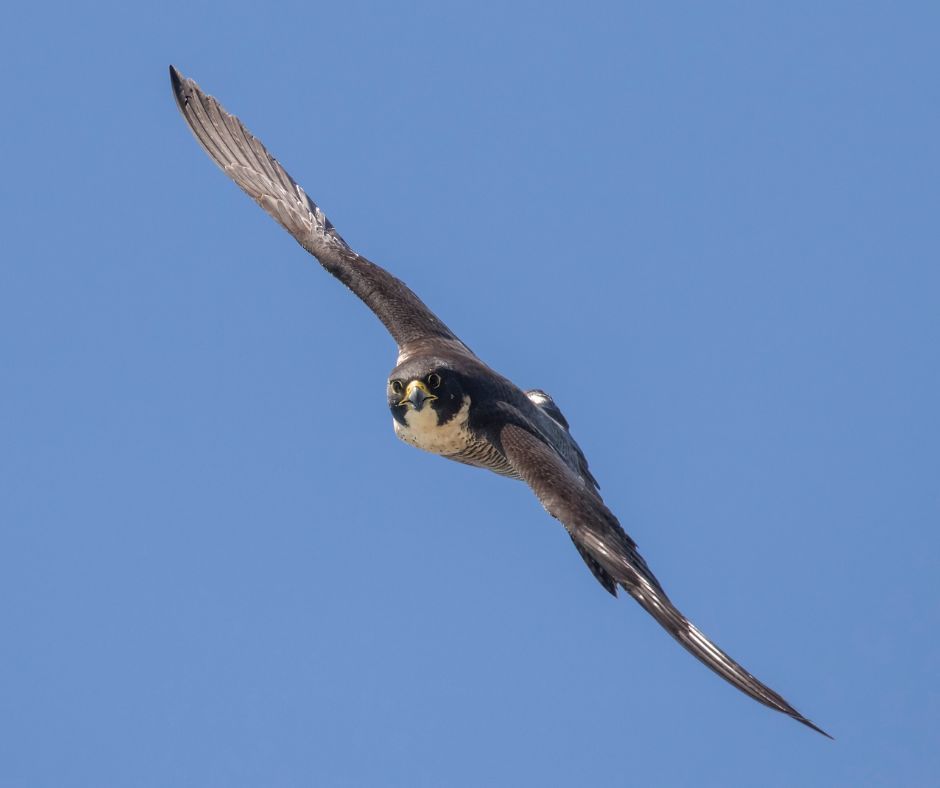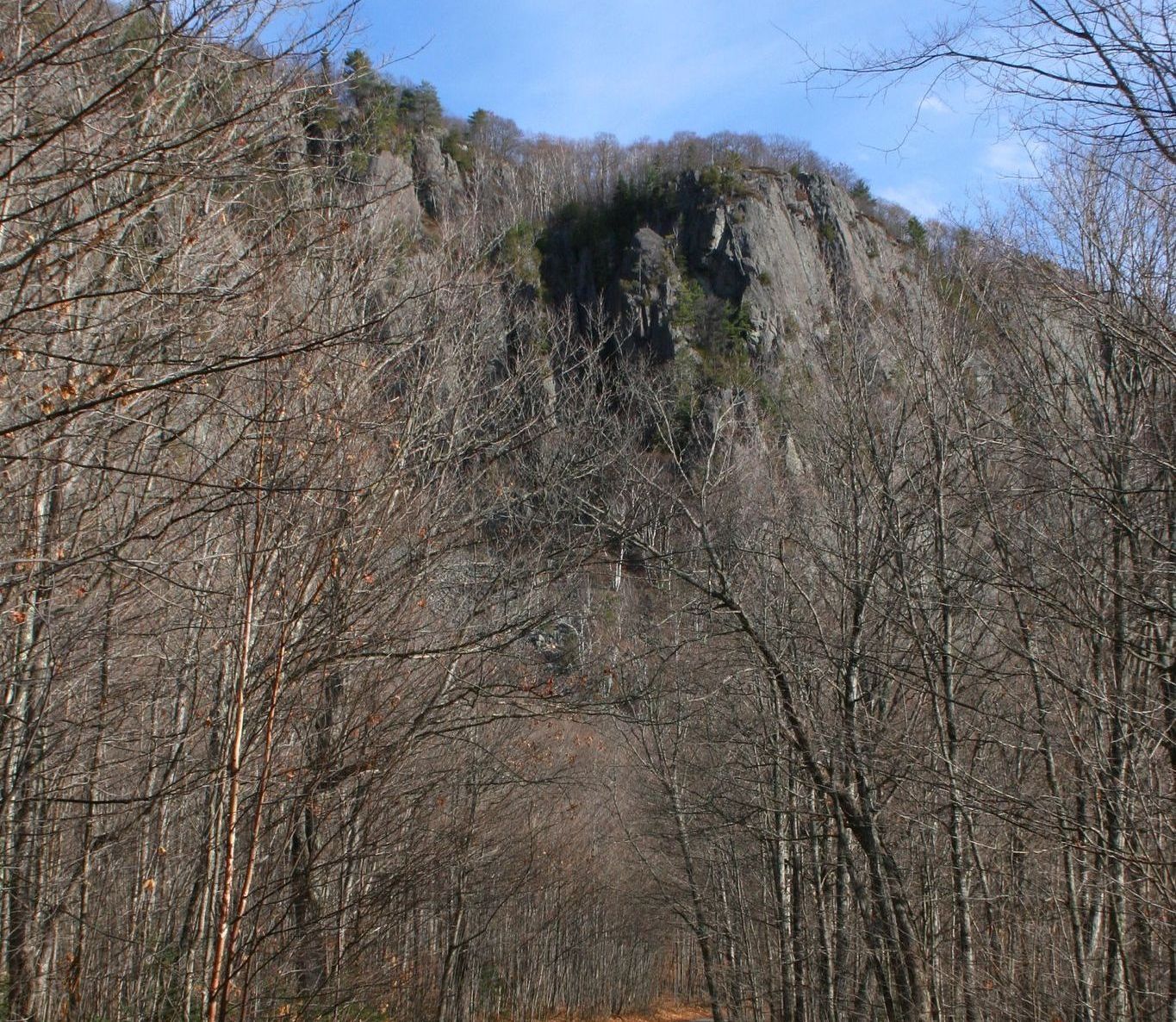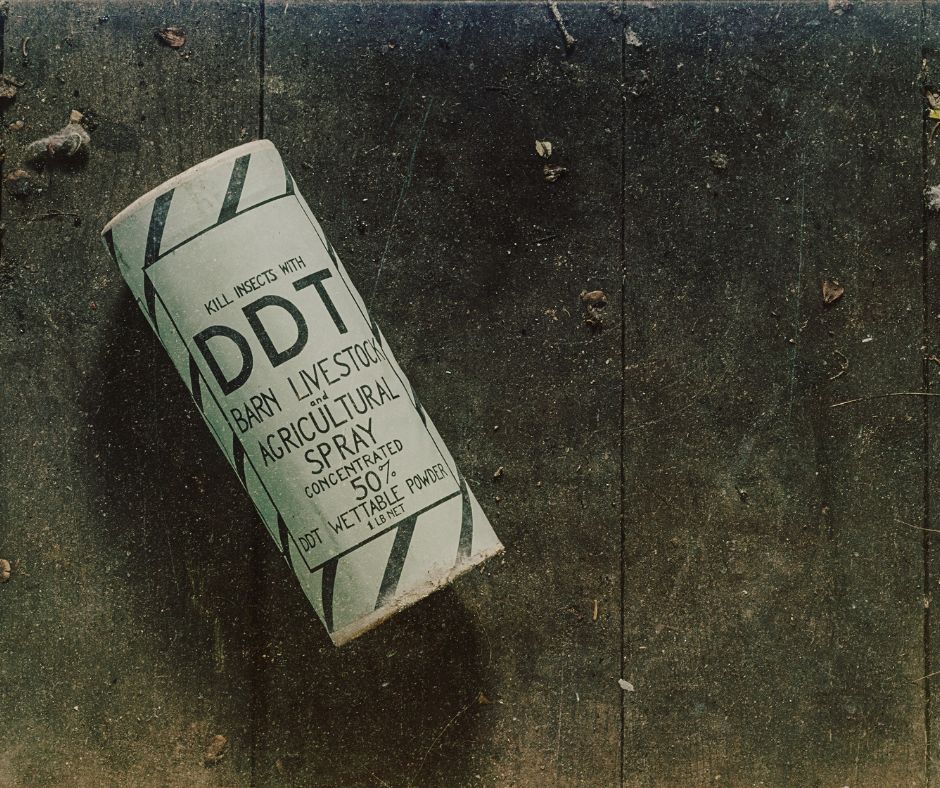Environmental Education
Peregrine Falcons: From DDT to Robertson Cliffs
From 1965 to 1985, peregrine falcons disappeared as a breeding species in Ontario, a tragic consequence of widespread DDT (dichlorodiphenyltrichloroethane) use. These majestic birds, known for their incredible speed and aerial agility, were once a common sight across the province. The story of their decline and subsequent challenges highlights the profound impact human activities can have on wildlife.

Peregrine falcons are best known as the fastest animal on earth, reaching 300km/h when diving during flight.
DDT and Peregrine Falcons
DDT is a synthetic chemical compound once widely used as an insecticide. In the 1940's DDT was applied in various forms, including as an aerosol spray, dusting powder, and in liquid solutions. It was used extensively in agriculture to protect crops from insect pests and in residential areas to control mosquitoes and other insects.
The chemical was also employed in large-scale public health campaigns, particularly in regions where mosquito-borne diseases were prevalent. As a result, DDT contamination became widespread in many environments, from agricultural fields to urban areas.
DDT was once widely available in the form of powders, sprays, and liquid solutions.
However, the environmental cost of DDT soon became apparent. As the chemical entered the food chain, its concentration increased at each trophic level, a process known as biomagnification. DDT is highly persistent and lipophilic, meaning it accumulates in fatty tissues and is not easily broken down or excreted by organisms. When smaller organisms such as insects consume DDT they retain it in their bodies. These contaminated insects are then eaten by larger predators, and the concentration of DDT increases with each step up the food chain.
Peregrine falcons, as apex predators, were particularly affected by this process. They primarily feed on birds, which in turn have consumed insects and other prey contaminated with DDT. As the falcons consumed large quantities of these contaminated birds, the DDT accumulated in their bodies to toxic levels. This high concentration of DDT interfered with calcium metabolism in female peregrine falcons, leading to the production of thin eggshells that would break during incubation.
The alarming decline in bird populations, coupled with growing public concern over environmental health, eventually led to action and DDT was mostly phased out by 1975. Any remaining stock was to be used or disposed of by 1991.
In 1994, efforts to reintroduce and conserve peregrine falcons began. Conservationists and biologists implemented breeding programs in captivity, ensuring that young peregrines were raised in controlled environments free from DDT exposure. These captive-bred falcons were then reintroduced into carefully selected cliff habitats, one of which being Robertson Cliffs. By 1997, the peregrines began actively nesting on the cliffs, serving as an unofficial symbol of the Algoma Highlands ever since.
Twenty Five Years Later, Twenty Five Steps Back
Peregrine falcons are particularly sensitive to disturbances in their nesting areas, and for 25 years, Robertson Cliffs provided them with the perfect sanctuary: sheer rock faces where they could raise their young in peace. This tranquil haven, however, was shattered in the spring of 2023 when illegal fireworks and drone activity caused the peregrines to abandon their nest. Left behind, two eggs that would never come to be.
The heartbreaking sight of these two eggs left behind was a devastating blow to our community, and an even bigger blow to the peregrine falcon species, who are still listed as "Special Concern" in Ontario under the Endangered Species Act.

The peregrine falcons abandoned nest on Robertson Cliffs, May 30, 2023.
The disruption in 2023 underscored the urgent need for vigilance in protecting these sensitive areas. To safeguard the wildlife that finds refuge within the conservancy, we remind all visitors that all AHC lands, including Robertson Cliffs, are designated as no-drone zones, and fireworks are strictly prohibited. These measures, outlined in our trail use policy, are essential to preventing such tragedies from occurring and unraveling years worth of conservation efforts.

Drones and fireworks are not allowed on AHC lands. Photo: Robertson Cliffs by Dan Weemhoff
It's been a year since the peregrines abandoned their nesting site, and so far, they have not returned. The once lively cliffs, echoing with the calls of the falcons and the flurry of wings, now stand silent. The absence of these incredible birds is a stark reminder of the fragility of our natural world and the consequences of human interference.
For now, all we can do is hope. Hope that the peregrines, having found a temporary sanctuary elsewhere, will once again grace Robertson Cliffs with their presence. Hope that our community will remain vigilant in protecting these sacred sites from further disturbances. And hope that the measures we have implemented will provide a safe and welcoming environment for the falcons to return to and raise their young once more - in their rightful place among the highlands.




